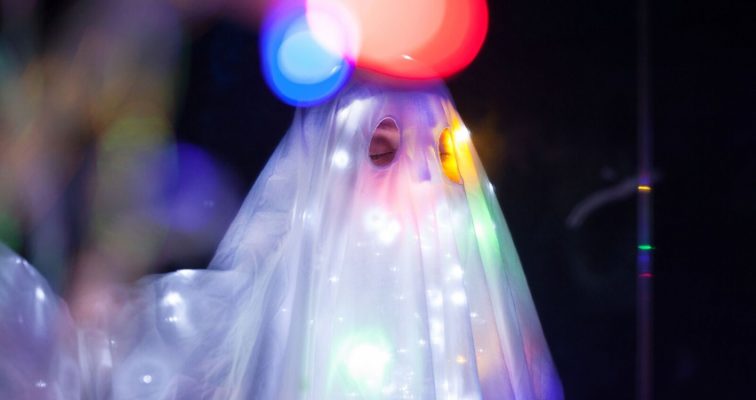It’s not every show at the Fringe where the audience is greeted by a glowing ghost shaking its ectoplasm to the sounds of Sia, but the ensuing hour demonstrates that Laura Davis isn’t just any comedian. Any worries that her old-school outfit (eye holes cut in a duvet) might be a cheap gimmick, or that she might be in any way hampered by limitations in facial cues or body language are quickly banished during an ambitious and expansive show.
It turns out that her spectral attire is entirely suitable for her material on the ephemeral things that weigh so paradoxically heavy. Ghosts represent sorrow, regret and missed opportunities and these are key themes; along with the existentially terrifying concept that we’re made of billions of atoms. Atoms that themselves consist of literally nothing. Heavy stuff, but Davis deftly weaves humour into these unlikely subjects. Imagine Sartre’s Being and Nothingness with added jokes.
There is some material early on that vanishes into the ether, but Davis patiently stokes her slow burn and the same jokes flower later on as she refers back to them, layering her comedy like a fine cake. She has a confidence in her material that calmly weathers any gaps in laughter, going as far as to heighten unease by liberally peppering her musings on the meaningless of existence with dark statements that could be considered cause for concern in other settings. “Have you ever held a fork really close to your face?” she asks during a section on her heroically tedious employment sorting cutlery, “It looks like prison bars.”
If all of this sounds like Ghost Machine is drifting towards naval-gazing on a current of its own nihilism, then rest assured that Davis’ ultimate aim is to get us to embrace the simple things, the guilty pleasures, the small reasons for celebration. Sure, asking members of the audience why they haven’t killed themselves may admittedly be an odd way to achieve this, but as suits her approach to comedy in general, it’s simply an off-kilter way of getting us to see why we’re happy to be alive.
As she slowly sheds her literal protective blanket the show heads towards a climax that feels looser, more improvised and personal; if rather more conventional than expected. That’s no bad thing however as we get a sense of the person beneath the construct; a necessary, very human point of connection that transcends the concept and ends the show on a strange sense of uplift. Considering the material explored, that’s some achievement.
